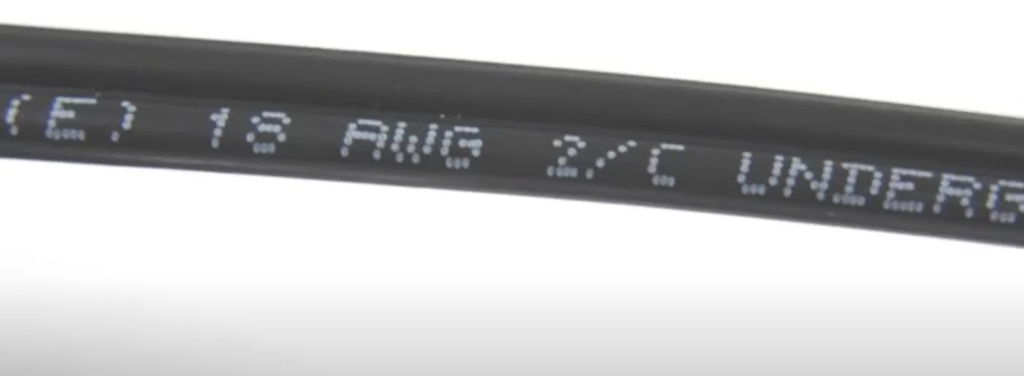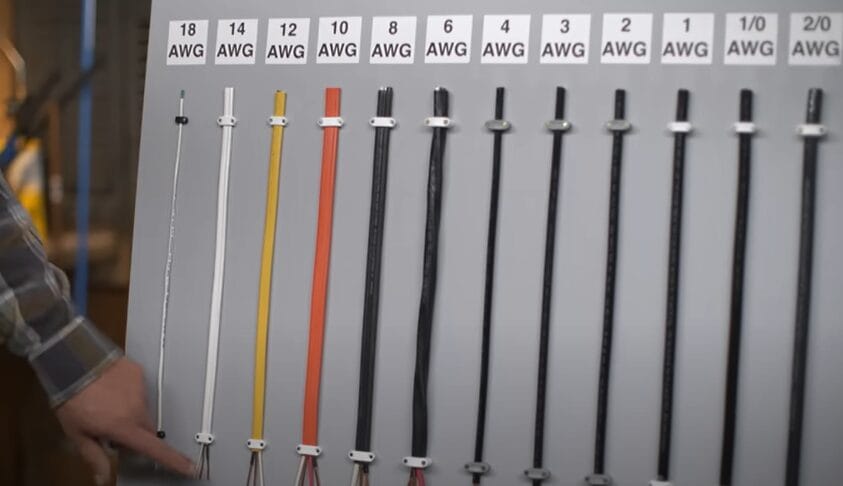How Many Amps Can 18 Gauge Wire Handle (Guide)

Have you ever wondered how much electrical current your 18 gauge wire can safely handle? Well, you’re not alone! It’s a crucial bit of know-how when tackling DIY projects or even just understanding the wiring in your home.
In general, 18 gauge wire can handle 14 amps at 60°C. This is the standard level that most electricians follow. However, the above amp value might change depending on the distance and the voltage.
I’ve experienced this firsthand in many electrical projects. So, today, I’m focusing on breaking it down and discussing how many amps an 18-gauge wire can handle.
Understanding the Ampacity of 18-Gauge Wire

When I’m knee-deep in a DIY project or eyeballing the wiring in my friend’s vintage camper, the one thing I keep front and center is the ampacity of the wire I’m working with.
And for those riding along, let’s focus on 18 gauge wire, a common choice for low voltage or low current applications.
First off, it’s all about understanding what ampacity means. It determines the maximum current a wire can carry without getting too hot, causing damage, or creating a fire hazard. And nobody wants that kind of heat at their party!
So, for an 18 gauge wire, the general rule of thumb is that it can handle up to about 10 amps in free air with optimal conditions. But hold your horses because if that wire is in a bundle or snaking through a wall, that number can drop faster than a hot potato. I’ve seen situations where you’re looking more at 7 amps being the safe limit.
Here’s a quick snapshot:
| Environment | Max Current |
|---|---|
| Free Air | 10 amps |
| In a Bundle | 7 amps |
It’s about keeping your project humming along nicely, safe, and sound under any loads it might face. After all, there’s nothing quite like seeing your handiwork light up and work flawlessly, am I right?
Determining Factors for Wire Ampacity
When we’re talking about ampacity, you’ve got to understand it’s not just a number you can pick out of a hat. Oh no, it’s about considering several key factors that come into play here, determining how many amps your 18 gauge wire can handle before you start seeing smoke.
- Insulation Type: It’s all about the jacket around your wire. Different materials mean different heat tolerances. Remember, more heat means less current.
- Ambient Temperature: If your wire’s in a hot spot, like an attic in summer, it can handle less current. Heat’s a big player here.
- Wire Bundling: Packing wires close together? They’ll heat up more, reducing the safe current they can carry.
- Run Length: Longer wire runs face more resistance, which heats things up. It’s like a marathon for electrons!
- Voltage Drop: Like running with weights on your ankles. Long runs or heavy loads mean less voltage at the end, affecting performance.
Keep these points in mind for a safe, efficient wire setup. It’s all about balancing the nitty-gritty of electricity with practicality!
Standard Ampacity for 18 Gauge Wire

We’re setting the stage for a performance when talking about the standard ampacity for 18 gauge wire. It’s all about what the wire can handle before the show—ahem, the circuit—gets too hot to handle!
| Insulation Temperature Rating | Ampacity for 18 Gauge Wire |
|---|---|
| 60°C | 14 amps |
| 75°C | 18 amps |
| 90°C | 21 amps |
In a perfect world, with 60°C insulation, our star performer, the 18 gauge copper wire, safely handles 14 amps. But remember, the real world’s a bit more complex. Factors like insulation type and environmental conditions play big roles.
Now, if we bump up to 90°C insulation, we’re talking 21 amps – that’s like upgrading your wire from economy to first-class! More power, less worry. But hey, don’t go wild. It’s about balance.
Remember, these are just guidelines. Always check local electrical codes and get a pro’s opinion on your needs. Safety first, always!
Common Applications for 18 Gauge Wire
When you’re knee-deep in a DIY project or sprucing up your space, it stands to reason you want to know exactly what your materials are capable of. Now, let’s talk about some popular uses for 18 gauge wire.
- Low-Voltage Lighting: Ideal for garden path lights and deck illumination, adding a charming touch to your outdoor spaces.
- Bell and Thermostat Wiring: Behind-the-scenes hero for doorbells and thermostats, ensuring functionality and comfort in your home.
- Hobbyist Projects: Perfect for model trains and miniature electronic setups, thanks to its flexibility and strength for detailed work.
- Automotive Applications: Commonly used for connecting sensors and gauges, crucial for the smooth operation of vehicles.
- Speaker Installations: Preferred by audio enthusiasts for car audio systems, providing clear sound without excessive bulk.
- Commercial Electronics: Found in the internal circuitry of office equipment like computers, printers, and copiers, facilitating reliable operation.
Remember, although 18 gauge wire is versatile, it’s not a one-size-fits-all solution. Before you start cutting and connecting, ensure the wire can handle the current required for your project.
Frequently Asked Questions
- Does Distance Affect Amps?
- Yes. When the distance increases, the amp value decreases due to higher resistance. That is why you should run wires under acceptable voltage levels.
- Maximum Current for 18 AWG Wire?
- In general, 18 AWG wires can handle up to 16A. But the recommended level is 14A. So, keep the amp value in the safe zone.
- What is the Amp Value for 18 Gauge Stranded Wire?
- The average rating for an 18 gauge wire is 14A. However, solid wires are capable of carrying more current than stranded wires. Some professionals might limit the 18 gauge stranded wire to 7A.
- What is the Amp Value for 18 Gauge Automotive Wire?
- 18 gauge automotive wires are unique. These wires can handle anything from 3A to 15A. When it comes to distance, you’ll be able to cover from 2.4 feet to 12.2 feet.
References
Organizations:
- National Electrical Manufacturers Association (NEMA). https://www.nema.org/
- Institute of Electrical and Electronics Engineers (IEEE). https://www.ieee.org/
- Underwriters Laboratories (UL). https://www.ul.com/solutions
Books:
- “Wiring Simplified: Based on the 2020 National Electrical Code” by H. P. Richter, W. C. Schwan, and F. P. Hartwell. https://www-origin.abebooks.com/servlet/BookDetailsPL?bi=31448296553
- “Electrical Wiring Residential” by Ray C. Mullin and Phil Simmons. https://www.barnesandnoble.com/w/electrical-wiring-residential-ray-c-mullin/1116778103
- “The Electrician’s Trade Demystified” by David Herres. https://www.abebooks.com/9780071818872/Electricians-Trade-Demystified-Herres-David-0071818871/plp
Website Resources:
- AllAboutCircuits. http://allaboutcircuits.com/
- The Spruce. http://thespruce.com/
- Electrical Code Simplified. http://electricalcodesimplified.com/
Video Resources:
Discount Low Voltage
This Old House
